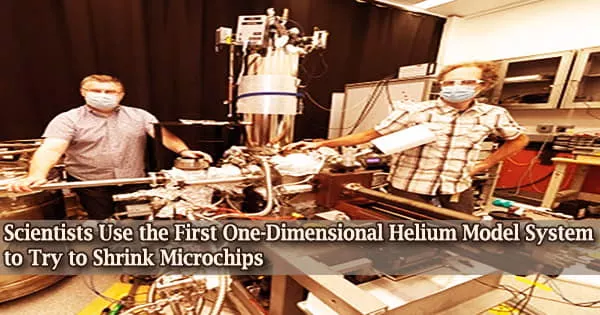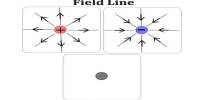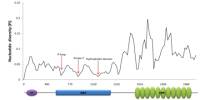The secret to shrinking microchips has been discovered by physicists at Indiana University and the University of Tennessee, and it involves helium. Microchips are used in everything now, from computers and automobiles to helping people recover their missing pets.
The wires that transport electricity to microchips must advance along with them as they get smaller, faster, and more capable. But unless they are created differently, they can only go so small physically.
“In a traditional system, as you put more transistors on, the wires get smaller,” said Paul Sokol, a professor in the IU Bloomington College of Arts and Sciences’ Department of Physics. “But under newly designed systems, it’s like confining the electrons in a one-dimensional tube, and that behavior is quite different from a regular wire.”
Sokol and Adrian Del Maestro, a professor of physics at the University of Tennessee, worked together to build a model system of electronics packed inside a one-dimensional tube in order to explore the behavior of particles in these conditions.
Their findings were recently published in Nature Communications.
Helium was chosen by the couple as a model system for their research because of its well-known interactions with electrons and the ease with which it can be made incredibly pure, according to Sokol. The first was that no one had previously used helium in a one-dimensional space, therefore there were problems with that.
People can move around in lots of different ways. But in a long, narrow hall, nobody can move past anyone else, so that behavior becomes different. We’re exploring that behavior where everyone is confined in a row. The big advantage of using a helium model is that we can go from having very few people in the hall to having it packed. We can explore the entire range of physics with this system, which no other system lets us do.
Professor Paul Sokol
“Think of it like an auditorium,” Sokol said. “People can move around in lots of different ways. But in a long, narrow hall, nobody can move past anyone else, so that behavior becomes different. We’re exploring that behavior where everyone is confined in a row. The big advantage of using a helium model is that we can go from having very few people in the hall to having it packed. We can explore the entire range of physics with this system, which no other system lets us do.”
The researchers also faced numerous other difficulties in developing a one-dimensional helium model system. For instance, it was too challenging to take measurements if they attempted to create a tube tiny enough to store the helium.
Additionally, it was not possible to apply methods like neutron scattering, a potent technique that uses a reactor or accelerator to produce a beam of neutrons in order to gather comprehensive data on particle behavior in a one-dimensional system.
On the other side, using specialized glasses built around templated molecules, scientists could create incredibly long tubes, but the holes weren’t large enough to contain the helium in one dimension.
“You literally need to make a pipe that is only a few atoms wide,” Del Maestro said. “No normal liquid would ever flow through such a narrow pipe, as friction would prevent it.”
The scientists used one-dimensional channel glasses that had been coated with argon to create a smaller channel and nano-engineered a material to address this problem. Then, they could create samples that could support the application of methods like neutron scattering to obtain in-depth knowledge about the system and hold a lot of helium.
Del Maestro and Sokol have created a significant new path for this research with their experimental realization of one-dimensional helium.
The researchers will then explore helium at low densities comparable to one-dimensional atom arrays used in quantum information technology and high densities comparable to electrons in a thin wire using this novel model system.
They also intend to create additional nano-engineered materials, such as pores coated with cesium that do not become moist with helium. This would make the confined helium even less likely to interact with the outside environment and create a system that is better suited for testing novel hypotheses.
















